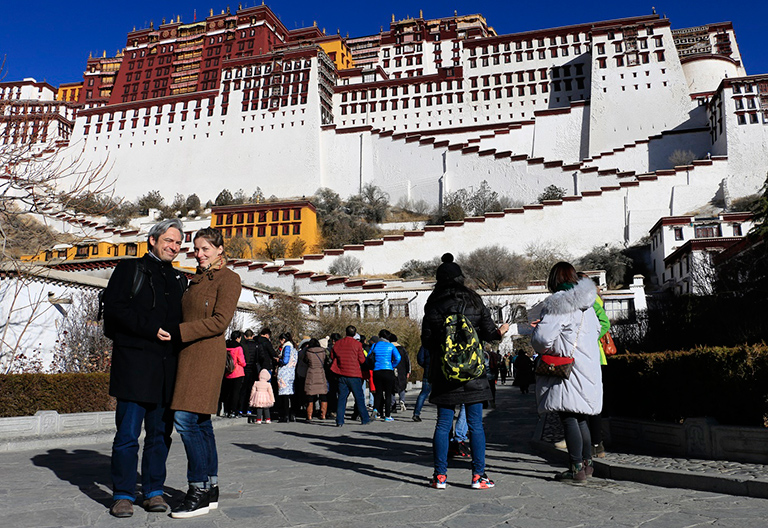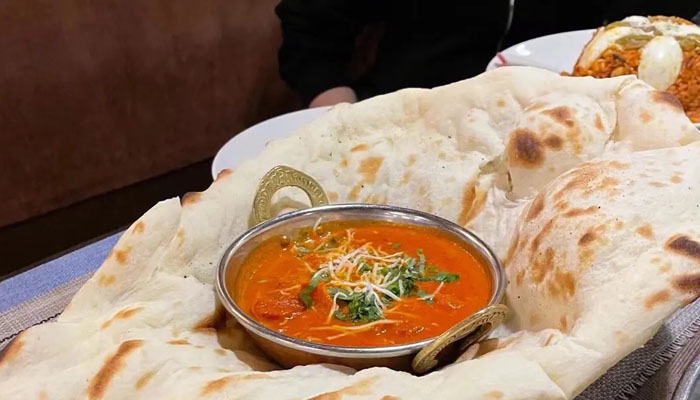Australian's Tibet Travel Guide: Insider Tips and Advice

Introduction
Embarking on a journey to Tibet from Australia requires meticulous planning and a deep understanding of the region's unique customs and traditions. As an Australian traveller, having insider tips and advice can significantly enhance your experience and ensure a smooth and memorable trip. These insights can offer invaluable guidance on navigating cultural nuances, choosing the best accommodations, and exploring hidden gems off the beaten path.
Importance of Insider Tips and Advice
- Locals' Perspective: Insider tips provide a glimpse into the local way of life, helping you immerse yourself in Tibetan culture.
- Hidden Gems: Discover off-the-beaten-path attractions and experiences that may not be easily found in conventional travel guides.
- Safety Precautions: Insider advice can offer crucial information on staying safe and respecting local customs during your visit.
Purpose of Australia's Tibet Travel Guide
Australian travelers looking to explore the mystical land of Tibet can benefit greatly from a comprehensive travel guide tailored to their specific needs. The purpose of the Australian's Tibet Travel Guide is to equip you with essential information that caters to the unique requirements and preferences of Australian tourists.
- Customized Recommendations: The guide offers personalized recommendations for Australian travellers, including visa requirements, transportation options, and cultural etiquette tailored to their backgrounds.
- Enhanced Experience: By following the guidance provided in the travel guide, Australians can enhance their Tibet experience and make the most of their time in this enchanting destination.
In the following sections, we will delve deeper into the intricacies of planning your trip to Tibet, navigating transportation within the region, exploring accommodation options, immersing yourself in Tibetan culture, savoring local cuisine, and ensuring your safety throughout your journey.

Planning Your Trip to Tibet
Before embarking on your journey to the breathtaking landscapes of Tibet, it is essential for Australian travellers to have a clear understanding of the visa requirements and the ideal time to visit this enchanting region.
Visa requirements for Australians
- Entry Permit: Australian citizens planning to visit Tibet must obtain an Entry Permit, which is separate from the Chinese visa. This permit is necessary for travelling to certain areas in Tibet.
- Group Tours: Most Australian travellers choose to visit Tibet as part of an organized group tour arranged by licensed travel agencies. These tours often assist in obtaining the required permits.
- Application Process: To apply for the Entry Permit, you will need to submit your passport, visa, and tour itinerary to the Tibet Tourism Bureau.
Best time to visit Tibet for Australians
- Spring (April to June): This season offers pleasant weather and the blooming of beautiful flowers, making it an ideal time for trekking and sightseeing.
- Summer (July to September): While this period experiences higher tourist traffic, it is the best time for exploring high-altitude areas such as Mount Everest and engaging in outdoor activities.
- Autumn (October to November): The crisp air and stunning fall foliage create a picturesque backdrop for your Tibetan adventure.
- Winter (December to February): Although colder, winter in Tibet offers unique experiences, such as witnessing Tibetan New Year festivities and enjoying fewer crowds at popular attractions.
By considering the visa requirements and choosing the best time to visit Tibet based on your preferences and interests, you can ensure a well-planned and enjoyable trip to this mystical land. In the following sections, we will delve into transportation options to and within Tibet, recommended accommodation choices, must-visit tourist attractions, cultural etiquette, dining experiences, and safety precautions for Australian travellers.

Transportation in Tibet
Efficient transportation is crucial for a seamless travel experience in Tibet, whether you are making the journey from Australia or exploring the diverse regions within Tibet itself. Understanding the available options and planning ahead can help you navigate the terrain with ease.
Getting to Tibet from Australia
- Flight Connectivity: The most common way for Australians to reach Tibet from Australia is by flying to major Chinese cities such as Chengdu, Beijing, or Shanghai and then taking a connecting flight to Lhasa Gonggar Airport.
- Visa Considerations: Ensure that you have the necessary visas for both China and Tibet before boarding your flights.
- Alternative Routes: Some travellers opt for overland routes from neighbouring countries like Nepal, which offer stunning landscapes but require thorough preparation and the right permits.
Transport options within Tibet for Australians
- Vehicle Rental: Renting a car or hiring a private driver can provide flexibility for exploring remote areas or following personalized itineraries.
- Public Transportation: Buses and minibuses are common modes of transportation within Tibet, offering budget-friendly options for getting around the region.
- Train Travel: The famed Qinghai-Tibet Railway provides a unique and scenic way to travel within Tibet, allowing passengers to witness breathtaking landscapes along the route.
By considering the various transportation options available when travelling to and within Tibet, Australian visitors can tailor their itinerary to suit their preferences and travel style. In the upcoming sections, we will delve into recommended accommodation choices for Australians, highlight must-visit tourist attractions in Tibet, explore cultural etiquette and safety tips, delve into Tibetan cuisine, and provide a comprehensive summary of insider tips and advice for a memorable journey to this captivating destination.

Accommodation and Tourism in Tibet
Choosing the right accommodation and exploring the key attractions are essential components of a fulfilling travel experience in Tibet. From cosy hotels that offer comfort and convenience to iconic landmarks that showcase the region's rich cultural heritage, there is much to discover in this enchanting destination.
Recommended hotels for Australians
- Shangri-La Hotel Lhasa: This luxury hotel in the heart of Lhasa offers elegant rooms, breathtaking views of the Potala Palace, and world-class amenities for a truly indulgent stay.
- Yak Hotel Gyantse: Nestled in the charming town of Gyantse, this boutique hotel provides a peaceful retreat with traditional Tibetan decor, warm hospitality, and easy access to local attractions.
- St. Regis Lhasa Resort: Known for its opulent accommodations and impeccable service, this five-star resort is a haven of tranquility in the bustling city of Lhasa.
Must-visit tourist attractions in Tibet
- Potala Palace: A UNESCO World Heritage Site and the former winter residence of the Dalai Lama, the Potala Palace is a symbol of Tibetan Buddhism's cultural and architectural significance.
- Jokhang Temple: Located in the heart of Lhasa, this revered temple is a spiritual hub for pilgrims and visitors alike, showcasing stunning Tibetan art and craftsmanship.
- Mount Everest: Embark on a once-in-a-lifetime journey to witness the awe-inspiring beauty of the world's highest peak, offering breathtaking views and unparalleled natural splendour.
Exploring these recommended hotels and iconic tourist attractions in Tibet can provide Australian travelers with a deep appreciation for the region's history, culture, and natural beauty. In the subsequent sections, we will delve into cultural etiquette, safety precautions, dining experiences, and offer a summary of insider tips and advice to enhance your travel experience in Tibet.

Cultural Etiquette and Safety Tips
Immersing yourself in Tibetan culture and ensuring your safety are essential aspects of a memorable and enriching travel experience in Tibet. By familiarizing yourself with local customs and taking necessary safety precautions, you can navigate the region with respect and awareness.
Understanding Tibetan culture
- Respect for Traditions: Tibetan culture places great importance on customs such as respecting elders, showing kindness to strangers, and honouring religious practices. Be mindful of these traditions during your interactions with locals.
- Religious Sensitivity: Buddhism is deeply ingrained in Tibetan society, so it is crucial to show reverence when visiting temples, monasteries, and other religious sites. Avoid disruptive behaviour and follow the guidelines set forth by the local community.
- Clothing Etiquette: Dress modestly and respectfully, especially when visiting sacred sites. It is advised to cover your shoulders and knees out of respect for local customs.
Safety precautions for Australians travelling in Tibet
- Altitude Awareness: Tibet's high altitude can pose risks for altitude sickness, so it is essential to acclimatize gradually, stay hydrated, and avoid strenuous activities upon arrival.
- Weather Considerations: Be prepared for sudden weather changes, especially in mountainous regions. Pack appropriate clothing and gear to stay comfortable in varying conditions.
- Health Precautions: Ensure you have adequate travel insurance that covers medical emergencies, and consider carrying essential medications for common travel ailments.
By understanding Tibetan culture and prioritizing safety precautions, Australian travellers can forge meaningful connections with the local community and explore the region with confidence and respect. In the upcoming sections, we will delve into dining experiences, traditional Tibetan cuisine, and offer a comprehensive summary of insider tips and advice to enhance your journey to Tibet.

Dining and Cuisine in Tibet
Exploring the unique flavours of Tibetan cuisine and understanding dining etiquette are integral parts of immersing yourself in the local culture during your travels in Tibet. From savouring traditional dishes to respecting culinary customs, dining experiences offer a window into the rich tapestry of Tibetan culinary traditions.
Traditional Tibetan dishes to try
- Tsampa: A staple food made from roasted barley flour, Tsampa is often mixed with butter tea or yoghurt and forms a significant part of Tibetan cuisine.
- Momos: These Tibetan dumplings, filled with meat or vegetables, are a popular and delicious street food enjoyed by locals and visitors alike.
- Thukpa: A comforting noodle soup with vegetables and/or meat, Thukpa is a hearty dish that is perfect for warming up in Tibet's cooler climates.
Dining etiquette for Australians in Tibet
- Respect for Food: Show respect for the food served by tasting a bit of everything and avoiding wastage. It is considered polite to finish your plate.
- Utensil Usage: In Tibetan culture, it is common to eat with your hands or use chopsticks. If using utensils, follow local customs and avoid placing chopsticks vertically in your bowl.
- Mindful Interactions: Engage in conversations with locals and share meals as a gesture of goodwill. Take your time to enjoy the meal and appreciate the flavours of Tibetan cuisine.
By sampling traditional Tibetan dishes and observing dining etiquette, Australian travellers can create meaningful connections with the local community and gain a deeper appreciation for Tibetan culture.
In the following sections, we will summarize insider tips and advice, including essential information on planning, transportation, accommodation, tourism, cultural etiquette, safety, dining, and more to ensure a fulfilling and memorable journey to Tibet.

Conclusion
Summary of Insider Tips and Advice for Australians Traveling to Tibet
As you prepare for your journey to Tibet from Australia, incorporating insider tips and advice into your travel plans can greatly enhance your overall experience. From visa requirements and transportation options to cultural etiquette and dining recommendations, being well-informed can make your adventure in Tibet both enriching and seamless.
Visa requirements and Transportation
- Obtain Entry Permit: Ensure you secure the necessary Entry Permit for Tibet, separate from your Chinese visa, and consider organized group tours for smoother permit processing.
- Flight Connectivity: Opt for flights to major Chinese cities before taking connecting flights to Lhasa, or explore overland routes from neighboring countries for an alternative travel experience.
Accommodation and Tourism
- Recommended Hotels: Consider staying at luxurious properties like Shangri-La Hotel Lhasa or Yak Hotel Gyantse for a comfortable retreat during your Tibetan adventure.
- Must-visit Attractions: Don't miss iconic sites such as the Potala Palace, Jokhang Temple, and the majestic Mount Everest for a comprehensive Tibetan experience.
Cultural Etiquette and Safety
- Respect Local Customs: Show reverence for Tibetan traditions, dress modestly, and practice religious sensitivity when visiting temples and monasteries.
- Stay Safe and Healthy: Acclimatize gradually to the high altitude, pack weather-appropriate clothing, and ensure you have necessary health precautions and travel insurance.
Dining Experiences
- Traditional Dishes: Indulge in Tibetan delicacies like Tsampa, Momos, and Thukpa to savour the authentic flavours of Tibetan cuisine.
- Etiquette Tips: Respect the food served, use utensils or eat with your hands mindfully, and engage in conversations with locals over meals.
By incorporating these insider tips and advice into your travel plans, Australian visitors can navigate the wonders of Tibet with confidence, respect, and cultural sensitivity.
Embrace the diversity of Tibetan culture, savor the culinary delights, and embark on a transformative journey that will leave a lasting impression on your travel memoirs. Safe travels, and may your adventures in Tibet be filled with unforgettable experiences and cherished memories.
